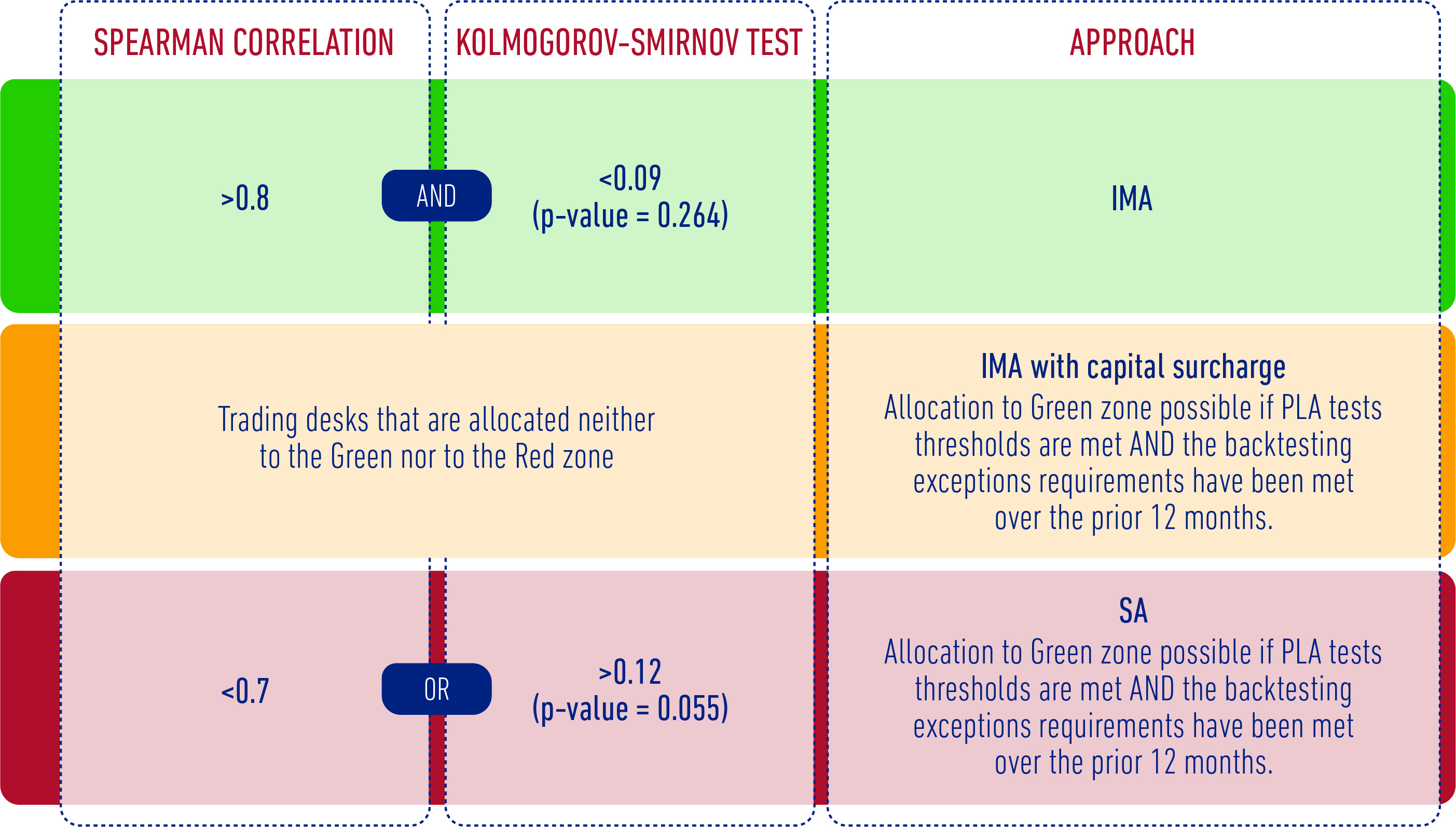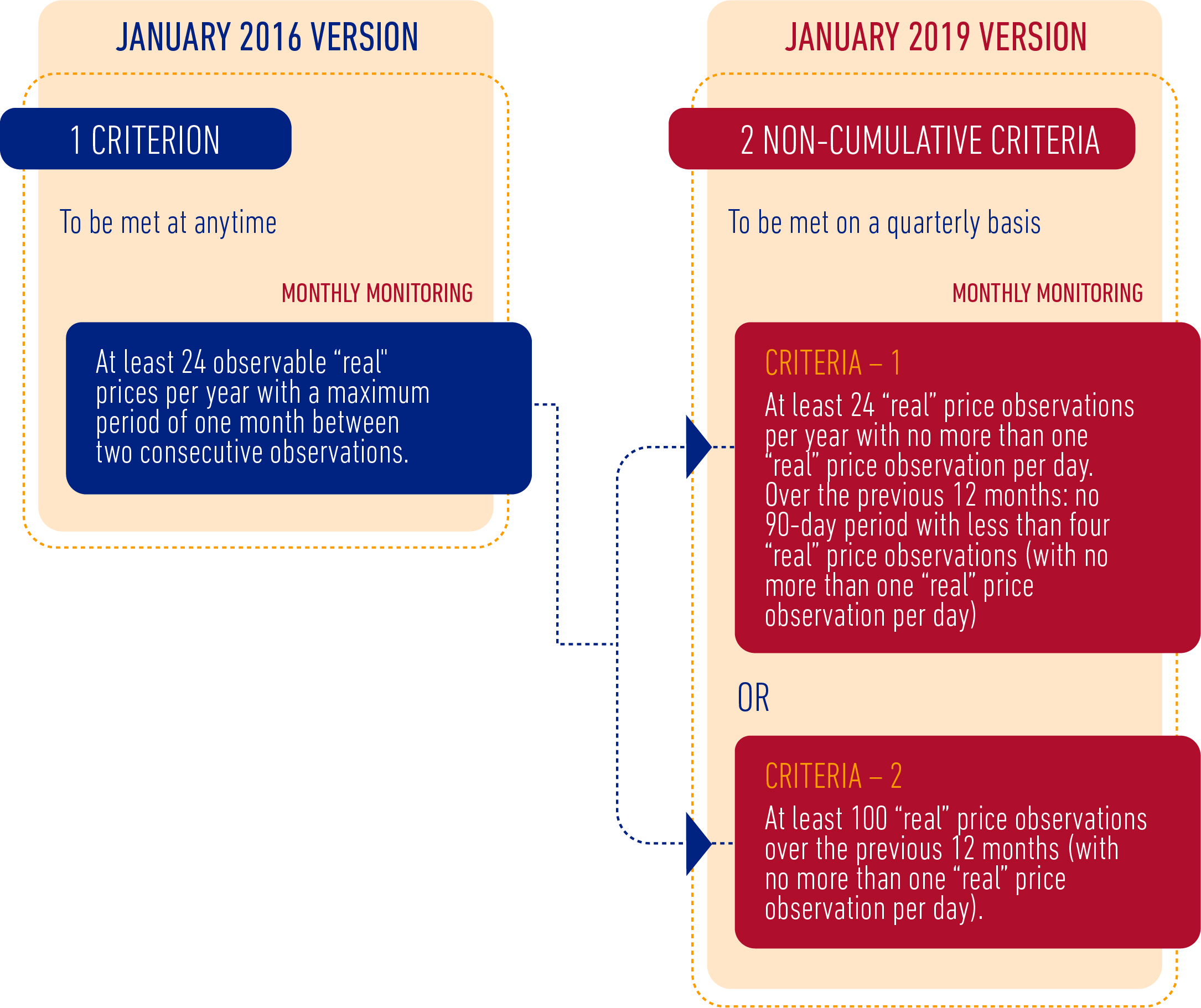Perspectives | 27 February 2019
Seven years after the first Basel Committee on Banking Supervision’s (BCBS) consultative paper on the Fundamental Review of the Trading Book (FRTB) and three years after the publication of the revised Market Risk Framework, is the 14 January 2019 release of the final Minimum Capital Requirements for market risk the end of this particular regulatory tunnel?
Why was this revision necessary?
The FRTB aims to prevent significant undercapitalisation of Trading Book exposures and harmonise capital standards for market risks across jurisdictions. In order to do so, the 2016 revised framework reinforced the risk-sensitive model approaches and required stricter boundaries between banking and trading books.
However, the implementation of these standards quickly proved to be difficult and the capital charge way too important. Thus, in September 2017, a 40% weighted average increase in the total market risk capital requirements was estimated[1].
One can easily understand why the banks were concerned, if not fiercely opposed to the implementation of the standards. Indeed, beyond the necessary clarifications, the standards raised serious issues such as the modellability criteria and computation of Non-Modellable Risk Factors (NMRF) and the Profit & Loss attribution (PLA) test which was almost impossible to pass whilst being a prerequisite for Internal Model Approach (IMA). Even the Standardised Approach (SA) was quite punitive, and the methodology to measure risk factor-level losses, their aggregation and the risk weights assigned to some asset classes were very controversial.
The BCBS’s January 2019 revised Market Risk Framework answers these concerns, which were first addressed in the consultation paper issued in March 2018.
The main modifications brought by the revised standards
The new version of the framework covers key concerns including:
- Clarification on the scope of application with a better defined boundary between the trading book and banking book making clear the treatment for certain exposures (e.g. equity investments in finds and look-through conditions) and more flexibility granted to the trading desk definition.
- Revisions of the Profit & Loss (P&L) Attribution (PLA) test with new metrics (Spearman Correlation and Kolmogorov-Smirnov tests), the introduction of a traffic light approach (see below) and the possibility to align Risk Theoretical P&L (RTPL) input data with the data used for the Hypothetical P&L (HPL).

- A relaxed definition of risk factors (RF) modellability, with a revised Risk Factor Eligibility Test (RFET) which aims to address the temporary lack of liquidity for some RF due to their seasonality:

- The authorisation for banks that have small or non-complex trading portfolios to use the current Basel 2.5 standardised approach as a simplified standardised alternative.
- Methodological refinements in the standardised approach, in particular for the treatment of foreign exchange risk (extension of the scope of liquid currency pairs subject to lower risk weights) and index instruments (introduction of new “index” buckets for equity and credit spread risks) and the recalibration of risk weights for general interest rate risk and FX risk.
Operational challenges remain
Beyond the technical aspects of these modifications, and just as important, are the operational challenges ahead.
A lot has been said in the past three years about the required computational power, but risk management, documentation and reporting are also key elements to consider, particularly those that are dependent on other regulatory projects.
The aforementioned modifications will require changes to information systems, processes and controls etc. Some of which exist already, but will have to be strengthened; others need to be created.
Thus, while RFET conditions have been a bit relaxed, the new standards emphasise the requirements in terms of controls when using a third-party data vendor. Outsourcing requirements or guidelines are not something new, but the granularity needed to meet the Market Risk Framework’s requirements are quite challenging. Failing these requirements can result in significant consequences as the supervisory authority could prevent the bank from using the vendor for the relevant risk factors. Both bank and vendor will, therefore, need to think it through carefully and adapt their systems, processes and controls accordingly, as well as prepare a backup plan.
Another aspect reasserted by the revised standards is the importance of the risk management system, and, among other things, the necessity of having three robust and independent lines of defense. While most banks already have such a system in place, the implementation of the new market risk requirements might trigger a resources issue. Recently, regulatory initiatives related to model risk management[2] have sorely tested the resilience of validation functions whose workload has increased tremendously. Bottlenecks are observed among the sacred lines of defense and, in particular at validation function level. Skilled and available resources are scarce, proper staffing of validation teams is a key element to consider as we move towards the implementation of the new Market Risk Framework.
Senior Management and Boards’ active involvement is also a prerequisite to achieving a firm-wide implementation of the framework, which highly depends on the quality and granularity of the information they are provided with. Understanding the new metrics and model outputs is as important, if not more, than their effective calculation. In brief, the effectiveness of the new Market Risk Framework will come down to the bank’s ability to provide the right people with the right information in a timely manner.
Last but not least, the FRTB implementation is all the more complex as its requirements resonate with other standards – both existing, as well as future ones.
Examples include BCBS 239 and IFRS 9 which need to be taken into account when implementing the Market Risk Framework in order to ensure effective compliance with both standards through optimized solutions.
For example, when IFRS 9 entered into force on the 1 January 2018, consistency questions between asset classification under IFRS 9 and the Trading Book / Banking book boundary were raised. Similarly, accounting and regulatory standards respectively mention observability and modellability. These notions, while very close in appearance, are yet different. Banks have to assess whether a potential alignment of these two notions is possible, or whether modellability and observability can live independently from each other yet in a consistent manner.
And now, as if FRTB implementation was not complex enough, the LIBOR reform has begun, raising the question of the alternative risk-free rates liquidity and modellability.
What next?
It might be premature to declare that the Market Risk Framework is fully stabilised. While it is an important step towards its implementation, key Regulatory Technical Standards are still expected (Non Modellable Risk Factors, the PLA test for example) and the timeline remains a bit blurred. At this point in time, the European Commission should adopt a Delegated Act by the end of 2019 incorporating amendments to the BCBS standards in the CRR2.
However according to this CRR version, the FRTB should be a reporting requirement only. Indeed, banks would be expected to report their market risk weights according to the new standardised approach (January 2021 at best) and a new legislative act will be required in order for the capital requirements to be calculated as per the full FRTB standards.
In such a changing environment, one can easily understand that banks are struggling to assess the implications of the final framework on their Business Model and desk profitability. With the FRTB project’s “stop and go” approach, management proves to be quite challenging, and even agility has its limits. In addition, banks are having to deal with other ongoing projects as well as Brexit concerns. But time is running out. While there does appear to be some light at the end of this particular regulatory tunnel, the operational and technical complexity of the revised minimum requirements for market risk is such that it is time to make FRTB a priority again.
Article written by Michelle Kwok (Quantitative Analyst, Mazars UK) and Pauline Pélissier (Senior Manager, Mazars UK).
[1] Basel III Monitoring Report
[2] For examples : US SR-11-07, EU Targeted Review of Internal Models, UK Principles on stress test model management














































































































































































































































































































































































